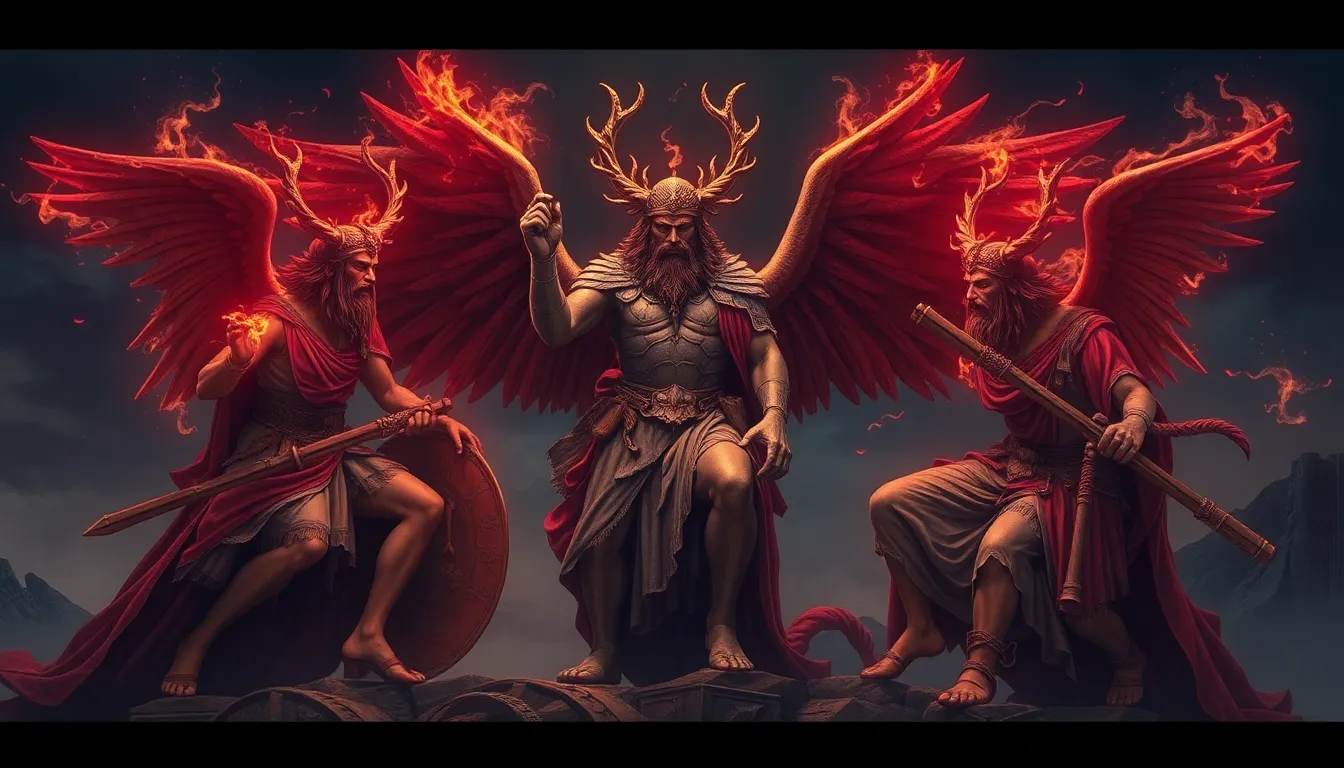The Furies: Analyzing Their Role in the Myths of Agamemnon
I. Introduction
The Furies, also known as the Erinyes, are significant figures in Greek mythology, representing the concepts of vengeance and retribution. Their presence in the myths surrounding Agamemnon underlines crucial themes of justice, guilt, and familial duty. This article aims to analyze the role of the Furies within the context of Agamemnon’s myths, examining their origins, symbolic representation, and lasting legacy in literature and culture.
II. The Origin of the Furies
The Furies have a deep-rooted mythological background, often associated with the darker aspects of justice. According to ancient beliefs, they were born from the blood of Uranus when he was castrated by his son Cronus, highlighting their connection to primal violence and revenge.
Key figures associated with their origins include:
- Gaia: The Earth goddess, from whom the Furies are said to have sprung.
- Uranus: The sky god, whose blood birthed the Furies, symbolizing the intertwining of divine justice and familial strife.
- Nyx: The goddess of night, sometimes considered their mother, emphasizing their mysterious and fearsome nature.
The Furies were significant in ancient Greek beliefs as they represented the moral order of society, punishing those who committed grave injustices, particularly within the family unit.
III. The Furies’ Role in the Myth of Agamemnon
The myth cycle of Agamemnon is a tragic tale marked by betrayal, murder, and revenge. Central to this narrative is the story of Orestes, Agamemnon’s son, who avenges his father’s murder by killing his mother, Clytemnestra, and her lover, Aegisthus.
The Furies play a crucial role in Orestes’ story:
- After Orestes murders his mother, the Furies pursue him relentlessly, embodying the guilt and consequences of his actions.
- They represent the unyielding nature of familial duty and the dire repercussions of violating it.
Their involvement underscores significant themes of justice and vengeance, as Orestes grapples with his moral responsibility and the haunting presence of the Furies serves as a reminder of the inescapable nature of his guilt.
IV. Symbolism and Representation of the Furies
The Furies are powerful symbols of vengeance and retribution within Greek mythology. They are often depicted as terrifying figures with snakes for hair and bloodshot eyes, emphasizing their role as agents of chaos and punishment.
Their dual nature is notable:
- As protectors of family honor, they are seen as enforcers of justice, ensuring that wrongdoers face consequences.
- Conversely, they also embody chaos, representing the destructive cycle of revenge that can ensue from familial conflict.
Artistic representations of the Furies in ancient texts and artworks often highlight these characteristics, capturing their fearsome appearance and their role in the moral fabric of society.
V. The Furies and Themes of Guilt and Justice
The psychological implications of the Furies in Agamemnon’s story are profound. They symbolize the inescapability of guilt and the moral dilemmas faced by individuals who commit acts of violence. Orestes’ journey is marked by his struggle with these emotions, as the Furies serve as relentless reminders of his actions.
Key themes explored through the Furies include:
- Guilt: The Furies evoke a deep sense of guilt in Orestes, as their pursuit signifies the weight of his moral transgressions.
- Moral Responsibility: Orestes’ actions raise questions about accountability and the nature of justice.
- Cycle of Violence: The Furies embody the cyclical nature of revenge, highlighting how violence begets further violence.
VI. The Furies in the Context of Greek Tragedy
In Aeschylus’ “Oresteia,” the Furies are pivotal characters that embody the themes of justice and retribution. Their role as antagonists is crucial in representing the consequences of Orestes’ actions and the moral complexities within the narrative.
When comparing the Furies to other tragic figures, several similarities emerge:
- Both the Furies and characters like Orestes and Clytemnestra grapple with their sense of justice and the impact of their actions.
- The Furies serve as a constant reminder of the tragic flaws (hamartia) that lead to downfall.
Their impact on the development of Greek tragedy is significant, as they introduce the themes of divine retribution and moral ambiguity, shaping the genre’s evolution.
VII. Legacy of the Furies in Literature and Popular Culture
The influence of the Furies extends beyond ancient texts into modern literature and popular culture. Their character has inspired numerous works, reflecting their enduring significance as symbols of vengeance and moral complexity.
Examples of their legacy include:
- Literary Works:</ Many modern authors draw upon the Furies to explore themes of justice, guilt, and retribution.
- Film and Theater: The Furies have been adapted into various films and stage productions, often reinterpreted to fit contemporary narratives.
- Cultural Significance: They continue to serve as a metaphor for the consequences of moral transgressions in modern society.
VIII. Conclusion
In conclusion, the Furies hold a vital place in the myths surrounding Agamemnon, representing the complexities of justice, guilt, and familial duty. Their multifaceted role in Greek mythology reflects the intricate moral landscape that defines human experience. Understanding the Furies encourages contemporary discussions on justice and morality, reminding us of the timeless relevance of these ancient figures.




